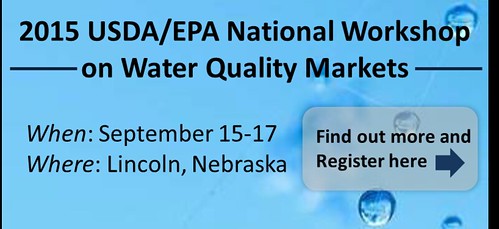From the USFWS National Wildlife Refuge System:
Refuge System fish and wildlife specialist Joe Milmoe used a telephoto lens and extender to capture this image of a fox at dusk at Virginia’s Occoquan Bay National Wildlife Refuge (http://go.usa.gov/vgW4). The refuge, 20 miles south of Washington, DC, includes woodland, grassland and marsh habitats that support a range of wildlife and more than 650 plant species.
Protecting natural resources, including air, land and water. Also of interest are threatened and endangered species as well as endangered species. Conservation (wildlife, soil, water, etc.) issues also discussed. Topics include: RCRA, CERCLA, Clean Water Act (CWA), NEPA, 404 Permits, EPCRA, FIFRA, and others.
Search This Blog
Monday, August 31, 2015
Sunday, August 30, 2015
Yellow Warbler
From the U.S. Fish and Wildlife Service, Mountain-Prairie Region:
North America has more than 50 species of warblers. This yellow warbler, seen perching on shrub at Seedskadee NWR, is one of the species brighter varieties. It has a sweet whistle and is just one of the many types of wildlife you will see when you visit any of our #WildlifeRefuges.
North America has more than 50 species of warblers. This yellow warbler, seen perching on shrub at Seedskadee NWR, is one of the species brighter varieties. It has a sweet whistle and is just one of the many types of wildlife you will see when you visit any of our #WildlifeRefuges.
Bear River National Wildlife Refuge
From the USFWS National Wildlife Refuge System:
“There are reasons we congregate in these hot spots - to worship beauty and to feel its effects light up the electrolytes in the bloodstream.” -- Frances Mayes, author and professor
Photo taken at Bear River National Wildlife Refuge, UT:http://1.usa.gov/1j7NMAw
“There are reasons we congregate in these hot spots - to worship beauty and to feel its effects light up the electrolytes in the bloodstream.” -- Frances Mayes, author and professor
Photo taken at Bear River National Wildlife Refuge, UT:http://1.usa.gov/1j7NMAw
Saturday, August 29, 2015
Gray Tree Frog
From the U.S. Fish and Wildlife Service Midwest Region:
Well hello! This gray tree frog was spotted hanging around waiting for its next meal at St. Croix Wetland Management District in Wisconsin.
Photo: Gray tree frog by Caitlin Smith/USFWS.
Well hello! This gray tree frog was spotted hanging around waiting for its next meal at St. Croix Wetland Management District in Wisconsin.
Photo: Gray tree frog by Caitlin Smith/USFWS.
A Fella's Got to Eat
From the USFWS National Wildlife Refuge System:
A fella’s got eat – in this, case horseshoe crabs. This alligator was photographed -- from a distance -- at J.N. “Ding” Darling National Wildlife Refuge in Florida. In addition to alligators, you can see scores of bird species, turtles and butterflies at the refuge.
Photo by Jim Bennight
About Ding Darling Refuge: http://1.usa.gov/1Eq3RxU
A fella’s got eat – in this, case horseshoe crabs. This alligator was photographed -- from a distance -- at J.N. “Ding” Darling National Wildlife Refuge in Florida. In addition to alligators, you can see scores of bird species, turtles and butterflies at the refuge.
Photo by Jim Bennight
About Ding Darling Refuge: http://1.usa.gov/1Eq3RxU
USDA-EPA National Workshop on Water Quality Markets September 15-17
From the USDA:
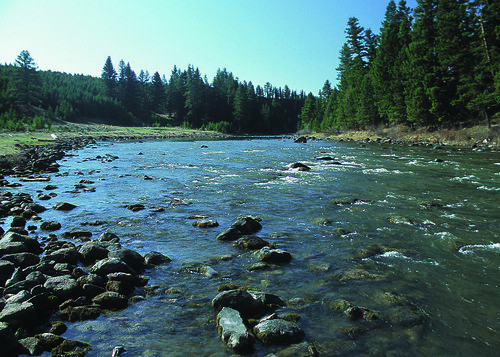
Posted by Ann Mills, USDA Deputy Under Secretary for Natural Resources and Environment, on August 28, 2015 at 1:00 PM
For most people, water quality markets are probably a new concept. They are not something you hear about on the news every day, even though reports frequently cover the need to clean up rivers and lakes. But to some—like states, utilities, and farmers—they represent an opportunity, and should be on the radar.
Water quality markets can reduce costs of cleaning up waterways by allowing sources with high costs of meeting water quality requirements to purchase credits from sources that have lower costs of making the same water quality improvement. Agricultural producers often have lower costs of improving water quality, which makes farmers and ranchers prime candidates to supply water quality credits.
USDA supports the participation of farmers, ranchers and forest landowners in water quality trading as a voluntary way to put more conservation on the ground, and improve water quality. The Department develops tools to calculate water quality benefits and resources on how to structure trading programs. Furthermore, the Department provides funding to support the development of water quality trading markets through NRCS Conservation Innovation Grants.
And now, in partnership with the Environmental Protection Agency, USDA is offering the public an opportunity to learn more about water quality markets. The EPA-USDA Water Quality Markets Workshop is bringing a host of experts involved in water quality trading markets together to share their experiences and provide a wealth of information to those interested in starting or participating markets. The event will take place September 15-17 in Lincoln, Nebraska, and includes regional forums where participants can learn more about trading programs in their area.
The Workshop will do more than provide information—it will also highlight the history of collaboration on water quality trading within the federal government. USDA and EPA signed a partnership agreement in 2013 to work together on environmental markets, including water quality markets. Tools and resources developed under the agreement will be previewed at the Workshop, and participants will learn how they can apply to water quality planning and management.
Workshop participants will also get a taste of the larger partnership that has developed in support of water quality markets—including a look at the National Network on Water Quality Trading. The National Network is composed of representatives from agriculture, industry, state, and environmental groups from across the country working to help others develop and participate in water markets. The National Network recently released Building a Water Quality Trading Program, which identifies common trading issues and the options, considerations, and examples important to developing a program.
There are plenty of reasons to attend next month’s Workshop—it will be an excellent forum to learn more about water quality markets. Registration closes August 31st. We look forward to seeing you there!

USDA supports the participation of farmers, ranchers and forest landowners in water quality trading as a voluntary way to put more conservation on the ground, and improve water quality.
Related Posts
Friday, August 28, 2015
Barn Owl
From the U.S. Fish and Wildlife Service Midwest Region:
Barn owls are master hunters. Not only do they have excellent low-light vision, they also have the ability to hunt prey in complete darkness based on sound alone!
Photo: Barn owl courtesy of Don Sutherland/Creative Commons.
Barn owls are master hunters. Not only do they have excellent low-light vision, they also have the ability to hunt prey in complete darkness based on sound alone!
Photo: Barn owl courtesy of Don Sutherland/Creative Commons.
Gray Bats
From Alabama Ecological Services Field Office:
Gray bats emerge from Anderson Cave in Shelby County, Alabama. Photo by Steve T. Davis of the Southeastern Cave Conservancy, Inc.
Gray bats emerge from Anderson Cave in Shelby County, Alabama. Photo by Steve T. Davis of the Southeastern Cave Conservancy, Inc.
Mercury in Everglade Snail Kites?
From USFWS Endangered Species:
Interersting trivia factoid! Mercury was a common ingredient in the production of felt hats in the 1800s, and because exposure to mercury caused slurred speech, tremors, irritability and other odd behavior, the term “mad as a hatter” was coined. Today, contaminant specialists in Florida are working to research mercury levels found in the feathers of Everglade snail kites and how it might affect nesting success of this #endangered species. (Photo by Garry Tucker, USFWS)
Interersting trivia factoid! Mercury was a common ingredient in the production of felt hats in the 1800s, and because exposure to mercury caused slurred speech, tremors, irritability and other odd behavior, the term “mad as a hatter” was coined. Today, contaminant specialists in Florida are working to research mercury levels found in the feathers of Everglade snail kites and how it might affect nesting success of this #endangered species. (Photo by Garry Tucker, USFWS)
Trumpeter Swan
From the U.S. Fish and Wildlife Service, Mountain-Prairie Region:
A trumpeter swan lifts off at Ninepipe National#WildlifeRefuge in Montana. (Dave Fitzpatrick /#USFWS)
A trumpeter swan lifts off at Ninepipe National#WildlifeRefuge in Montana. (Dave Fitzpatrick /#USFWS)
Thursday, August 27, 2015
New Sage Grouse Conservation Strategy Good for Cattle Ranches, Good for Birds
From the #USDA:

Posted by Agriculture Secretary Tom Vilsack, on August 27, 2015 at 4:10 PM

USDA today unveiled Sage Grouse Initiative 2.0, its roadmap to guide voluntary conservation efforts on private grazing lands in the West. Photo courtesy of Ken Miracle.
Today, USDA released its new long-term investment strategy for sage grouse conservation—Sage Grouse Initiative 2.0 (SGI 2.0). USDA’s planned investments will complement the great conservation work already happening throughout the West and build on the work of the Sage Grouse Initiative, a partnership between USDA, ranchers and conservation groups that began in 2010. SGI 2.0 provides our partners a roadmap to fill unmet needs by rallying around a cohesive, partnership-focused conservation strategy that is good for cattle ranches, good for the bird, good for rural economies and good for sustaining the Western way of life.
The SGI 2.0 investment strategy is intended to be a living document, shaped by the best available science and the priorities of our partners. SGI 2.0 and other strategic partnership initiatives like the Regional Conservation Partnership Program underscore the growing demand for a new conservation philosophy of putting local partners in the driver’s seat and allowing them to set priorities and develop strategies that make sense for their operations and communities while still meeting conservation goals.
In April, we saw the power of strategic, partner-driven conservation on private lands, when the Fish and Wildlife Service withdrew its proposal to list the Bi-State sage-grouse, a geographically distinct population of the bird, on the Endangered Species List. Other successes include the recent decisions not to list the Arctic grayling in Montana, the proposed delisting of the Louisiana black bear, and the recent delisting of the Oregon chub, all due in part to the success of private lands conservation.
These decisions underline the importance of continuing our work to restore and protect habitat through SGI 2.0. Strategies like SGI 2.0 not only help to provide better habitat and better protection for species, they provide greater predictability and certainty for producers. This is a strategy that works for producers, as evidenced by the fact that 1,129 ranchers in 11 states have already partnered with us to make conservation improvements through the Sage Grouse Initiative to 4.4 million acres—an area twice the size of Yellowstone National Park.
SGI 2.0 will allow USDA and ranchers to conserve up to a total of 8 million acres of sage grouse habitat—an area more than seven times the Great Salt Lake—and will bring the total investment in sage grouse conservation to an anticipated $760 million by 2018.
SGI 2.0 relies on tools like conservation improvements and habitat improvement to get the job done. For example, more conservation easements will continue to stitch together the landscape, reducing the impacts of exurban development on sage grouse, in places like Idaho’s Pioneer Mountains, and protecting the wet meadows in places like the Bi-State region. During the past five years, SGI has grown the amount of land in easements 18-fold.
Meanwhile, SGI 2.0 will continue removing invasive conifers and grasses, which degrade sagebrush habitat and provide fuel for unwanted wildfire. For example, since 2010, we have reduced threat of invasive grasses on 1.7 million acres, and SGI 2.0 will scale up that work even further.
We can’t meet the challenges of the new century without partners of all kinds—farmers, ranchers, family forest private companies, universities, local and tribal governments, non-profit organizations and businesses—at the table. Together, we will forge a new era of conservation partnership that more effectively confronts the growing threats to our natural resources and keeps our land resilient and our water clean for generations to come.
Related Posts
Alaskan High School Students Learn Valuable Skills at "Fish Boot Camp"
From the #USDA:
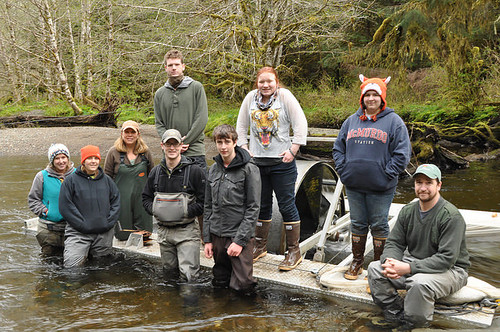
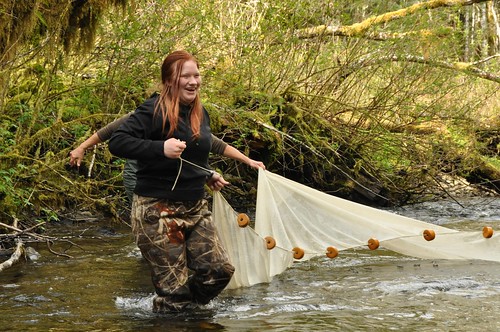
Posted by Nat Gillespie, Assistant National Fisheries Program Leader, U.S. Forest Service, on August 27, 2015 at 2:00 PM

The Twelvemile Creek restoration monitoring crew and Fish Tech Boot Camp students and instructors pose for a photo in front of a screw trap, which captures coho and steelhead smolt that our migrating out to the ocean. The fish are released after being measured and marked with a coded wire tag. Students from Port Protection, Thorne Bay, and Klawock, Alaska, joined the crew composed of staff from the U.S. Forest Service, Sitka Conservation Society and the University of Alaska Southeast Fish Tech Program. Photo credit: Scott Harris, Sitka Conservation Society
This post was co-authored with Andrew Thoms, Executive Director of the Sitka Conservation Society.
“The thing that our forests grow best is salmon!” is the local phrase that a visitor is most likely to hear when visiting some of the 32 communities that live near the Tongass National Forest of Southeast Alaska.
Tongass National Forest staff, local school districts, a local conservation organization, and the University of Alaska have undertaken a joint project to figure out how a forest can be managed to create jobs and other economic opportunities and guarantee the long-term sustainable yield of the Tongass’ fisheries resources.
For thousands of years, the Tongass has been occupied by humans, supported by the bounty of salmon and other marine and forest resources of the Pacific coast. Today, salmon and fisheries continue to be the core of Southeast Alaska’s economy. Staff at the Tongass National Forest estimate that the Tongass produces over 25 percent of all salmon harvested in the Northeastern Pacific Ocean and is responsible for over $1 billion of economic activity a year. Given the historic and current cultural and economic importance of salmon, it is only logical that entities within the region are thinking about a salmon future.
“The Forest Service, the University of Alaska Southeast Fisheries Technologies Program, school districts on Prince of Wales Island and the Sitka Conservation Society came together to host the ‘fisheries technician boot camp,’” said Andrew Thoms, executive director of the Sitka Conservation Society. “Our goals were two-fold: first, we wanted to give youth on-the-job experience by working as part of a team monitoring salmon returns and spawning in a recently restored river. Second, we wanted to give students an idea of the jobs and careers available to them as land managers, essentially serving as stewards of the amazing salmon resource that the Tongass National Forest produces.”
In the program, students received hands-on training in fish capture, fish identification and tagging of juvenile salmon out-migrating to the ocean. Students received both college and high school credits for the experience.
Not only does the project collect valuable data for the Forest Service, but the students are also gaining a great deal.
Tamar Theurer, from Port Protection, Alaska, was one of the students selected for the program.
“I learned how to clip adipose fins and I learned how to identify different types of salmon and other fish,” Theurer said. “I learned more about the environment and habitats of fish and birds; and oh, I also learned my trees! Some of them at least. I want to go into fisheries, so not only will I have knowledge of how to do these things but I can also use this experience on my resume.”
This project is one of many collaborative efforts currently taking place on the Tongass National Forest and one of a wealth of programs to restore and protect wild Pacific salmon runs and fisheries stocks. Awareness is growing of the important role that National Forest System lands and watersheds play in producing wild Pacific salmon stocks. This program, and many others like it, will be integral to ensuring that salmon stocks continue to run thousands of years into the future.
The program received support from the National Forest Foundation.
This post is part of a series featuring the Forest Service’s work with partners on restoration across the country.

Tamar Theurer, from Port Protection, Alaska, learns how to set up a fyke net for monitoring fish abundance on the Tongass National Forest. Photo credit: Scott Harris, Sitka Conservation Society
Related Posts
Wednesday, August 26, 2015
Washington Woman Inspired to Grow Out on Her Own
From the #USDA:
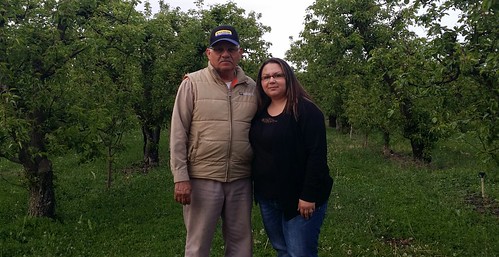

Posted by Tanya Brown, FSA Outreach Marketing Specialist, on August 26, 2015 at 11:00 AM

Elsa Torres’ father, Jose, inspired her to buy an orchard and farm on her own.
For Elsa Torres, farming is more than just a job or a livelihood. It’s an inspiration.
Ever since she was a young girl, Elsa can remember working in orchard fields with her father, Jose Torres. It was something she loved and cherished. “My father is the person I admire the most,” said Elsa. “He came from Mexico with nothing and for 25 years he worked on an orchard that he now owns. He didn’t start out with a formal education. But now he’s a business owner. He’s an example of the American dream and how someone who works hard can become a success.”
In 2009, when the opportunity came to purchase that orchard Jose bought the land. Elsa knew she could do the same someday so that her two children could experience the joy she had growing up on a farm.
“I love working out in the fields and the smell of fresh cut grass while trees are blooming,” said Elsa, who now has her own family and works a full-time job but still helps her father by managing the financial side of his orchard business. “It’s busy, but you gain a sense of appreciation for growing things.”
So a year ago, when she stumbled across a 50-acre corner lot loaded with fruit trees and wine grapes she knew it was her chance to become an entrepreneur. But she couldn’t tell if that particular Wapato, Washington property was up for sale. She went home and called a realtor to see if any farm property in the area was available.
“The realtor said he had one going on the market and it had everything we wanted, fruit trees, grape vines and room for expansion. He told me the name of the road and it was the same 50-acre corner lot,” said Elsa. “That’s when I knew it was meant to be.”
Like many beginning farmers, Elsa found it difficult to obtain financing to buy the land. After being turned down for a loan by five different banks, she contacted the U.S. Department of Agriculture’s (USDA) Farm Service Agency (FSA) for help.
“Elsa was unable to secure financing from a private agricultural lender because she lacked the capital needed for the required down payment,” said Scott Smith, farm loan officer with the Yakima County FSA office in Washington State. “Through the FSA direct farm ownership loan program, we were able to provide the needed financing to allow her to purchase a farm.”
The direct farm ownership loan program provides farmers and ranchers the opportunity to purchase farmland, construct and repair buildings and make farm improvements with no required down payment and a maximum loan amount of $300,000. In fiscal year 2013, FSA obligated 2,563 direct farm ownership loans totaling more than $448 million.
Elsa also received help from the Northwest Farm Credit Service’s Jumpstart program. Now, she owns her own farm, is selling grapes to a local winery and thinking about expanding her operation. For now, Elsa is happy to grow into her own and continue the family orchard business.
“It’s a total family operation. My husband, dad, brother, nephew and sister all help out,” said Elsa. “It’s busy, but we will be just fine.”
To learn more about how USDA helps new farmers, visit www.usda.gov/newfarmers. For more information on FSA farm loans, visit www.fsa.usda.gov/farmloans or find your local FSA county office at http://offices.sc.egov.usda.gov/.

Elsa named her farm B&J Orchards & Vineyard after her children. Pictured (l to r) Elsa’s daughter Bianca, Elsa Torres, her son Juan, Jr., and husband Juan.
Related Posts
Tags: #NewFarmers, #womeninag, Beginning Farmers, Farm Loans, Farmers, FSA, Loans, Mexico, new farmers, Washington State
Yellow-headed Blackbirds
From the U.S. Fish and Wildlife Service, Mountain-Prairie Region:
Yellow-headed blackbirds perch on fence post looking like a choir awaiting their conductor. However this beautiful bird does not have the most angelic song, as it is described as sounding like a rusty farm gate opening. Follow the link below to hear this distinct song and you be the judge.
http://bit.ly/1PQ88f0
Yellow-headed blackbirds perch on fence post looking like a choir awaiting their conductor. However this beautiful bird does not have the most angelic song, as it is described as sounding like a rusty farm gate opening. Follow the link below to hear this distinct song and you be the judge.
http://bit.ly/1PQ88f0
Indian Pipe (Ghost Plant)
From DeSoto and Boyer Chute National Wildlife Refuges:
A very interesting plant was observed on the refuge yesterday. This white wildflower is commonly referred to as Indian Pipe or Ghost Plant. Lacking chlorophyll (the stuff that makes plants green), it receives nutrients through its root system by forming a relationship with underground fungi and photosynthetic trees. Very cool!
Indian Pipe photo by Veronica Kelly/USFWS
A very interesting plant was observed on the refuge yesterday. This white wildflower is commonly referred to as Indian Pipe or Ghost Plant. Lacking chlorophyll (the stuff that makes plants green), it receives nutrients through its root system by forming a relationship with underground fungi and photosynthetic trees. Very cool!
Indian Pipe photo by Veronica Kelly/USFWS
Green Sea Turtles
From USFWS National Wildlife Refuge System:
Green sea turtles don’t look green. They’re so named for the color of their skin. Among the largest sea turtles in the world, adults grow to five feet long and weigh up 700 pounds. They can live 70-80 years. Mating takes place every two to four years. Eggs hatch after about two months. This turtle was photographed by Kydd Pollock around Palmyra Atoll National Wildlife Refuge, HI, one of seven national wildlife refuges in the Pacific Ocean near the equator and part of the Pacific Remote Islands Marine National Monument – the largest marine conservation area in the world.
About Palmyra Atoll Refuge: www.fws.gov/refuge/
Green sea turtles don’t look green. They’re so named for the color of their skin. Among the largest sea turtles in the world, adults grow to five feet long and weigh up 700 pounds. They can live 70-80 years. Mating takes place every two to four years. Eggs hatch after about two months. This turtle was photographed by Kydd Pollock around Palmyra Atoll National Wildlife Refuge, HI, one of seven national wildlife refuges in the Pacific Ocean near the equator and part of the Pacific Remote Islands Marine National Monument – the largest marine conservation area in the world.
About Palmyra Atoll Refuge: www.fws.gov/refuge/
Indiana Bats
From U.S. Fish and Wildlife Service Midwest Region:
Endangered Indiana bats are starting to arrive at their winter homes! Many females will enter the hibernacula shortly, but males will remain active until late autumn.
Photo: Indiana bats by Ann Froschauer/USFWS.
Endangered Indiana bats are starting to arrive at their winter homes! Many females will enter the hibernacula shortly, but males will remain active until late autumn.
Photo: Indiana bats by Ann Froschauer/USFWS.
Florida Semaphore Cactus
From the USFWS Southeast Region:
A project is underway to reintroduce Florida Semaphore Cactus to Florida Keys.http://1.usa.gov/1PQxVUn (Photo: Dave Bender, FWS. )
A project is underway to reintroduce Florida Semaphore Cactus to Florida Keys.http://1.usa.gov/1PQxVUn (Photo: Dave Bender, FWS. )
Tuesday, August 25, 2015
Student Climate and Conservation Congress: Bright Young Minds
From the #USDA:
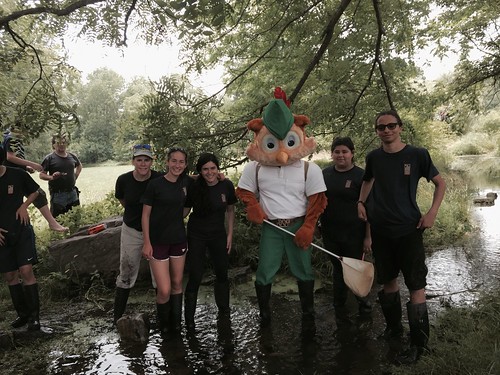
Posted by Joanna Mounce Stancil, Senior Advisor for State and Private Forestry, on August 25, 2015 at 1:00 PM

Woodsy Owl joins Sc3 students in a river ecology conservation adventure.
This year, for the first time, the Forest Service partnered with the Green School Alliance and their principle partner the Fish and Wildlife Service (FWS) in support of the Student Climate and Conservation Congress (Sc3). Held June 21-27 on the beautiful campus of the FWS’s National Conservation Training Center in Shepherdstown, West Virginia. Sc3 brought together more than 100 creative, innovative and dedicated high school students from across the country. While there were adults present if needed, Sc3 was a youth driven congress. Their big quest “To change everything, we need everybody. How will you engage others in developing a brighter and more just global community?”
For the Forest Service the Sc3 was a great opportunity to look through the eyes of youth as they prepare for their generation’s leadership role in addressing the challenges of a changing climate. As shared by Dr. Douglas Boyce, Acting Climate Change Advisor, “I was particularly impressed with the students’ depth of knowledge and grasp of issues surrounding climate change. Dealing daily with the problems associated with climate change, I found hope for the future because I learned these students are engaged, passionate, and poised to help society tackle and solve the mounting number of significant and challenging climate change issues.”
At the beginning of the Congress, students decided on ten topics and were charged to develop a project and presentation around a chosen topic – with the intent to implement their projects when they returned home. The ten topics were: education, lifestyle change, justice and policy, community/political, agriculture/food and gardening, social media/technology, sustainable infrastructure, climate change, art and waste management.
Avoiding the climate change doom and gloom, students were creative and innovative in tackling the topics. Presentations included innovative websites full of information and a call to action, a vertical garden created from recycled products, the “Shake and Fold Challenge” used song and dance in a “video commercial” on how to not waste water or paper – just shake, shake, shake your wet hands and only one paper towel, please. Woodsy Owl got his groove on in the commercial to show his support of conservation. Another presentation “Earth without Art is Eh” students cleverly combined humor with science and an artistic flare to present how they see the world in relation to climate change and conservation. For them everything in the natural world is art, including us.
Each of the Sc3 10 topics is a potential concern/impact needing further discussion as we develop local, national and international strategies to meet the climate change and conservation challenges to come. Several of these students are already involved in Forest Service program partnerships that focus upon conservation education, land stewardship and food security. In the future, we will likely see some of these Sc3 students join the Forest Service team as leaders in addressing issues and creating solutions to climate change and natural resource conservation.
Related Posts
Sandhill Cranes
From the USFWS National Wildlife Refuge System:
Manith Kainckara took this dramatic photo of sandhill cranes at Bosque del Apache National Wildlife Refuge, NM
Manith Kainckara took this dramatic photo of sandhill cranes at Bosque del Apache National Wildlife Refuge, NM
Plume Moth
From Great River and Clarence Cannon National Wildlife Refuges:
This unique insect, with it's thin body and "T" shape, is called a Plume Moth. Their wings have the appearance of a bird's plume (feathers) and when at rest, the moth rolls both wings into a rod shape. The result is an unusal profile for a moth. When perched, they resemble a vintage propeller airplane.
This unique insect, with it's thin body and "T" shape, is called a Plume Moth. Their wings have the appearance of a bird's plume (feathers) and when at rest, the moth rolls both wings into a rod shape. The result is an unusal profile for a moth. When perched, they resemble a vintage propeller airplane.
Monday, August 24, 2015
Little Green Dude
From Archie Carr National Wildlife Refuge:
Here's a close up of our little Green dude. He was enjoying his first view of the morning sun. sunglasses emoticon ☀
Photo: A. Vazquez/USFWS
Here's a close up of our little Green dude. He was enjoying his first view of the morning sun. sunglasses emoticon ☀
Photo: A. Vazquez/USFWS
Commitment to Innovation and Conservation Shapes the Littles' Family Farm
From the #USDA:

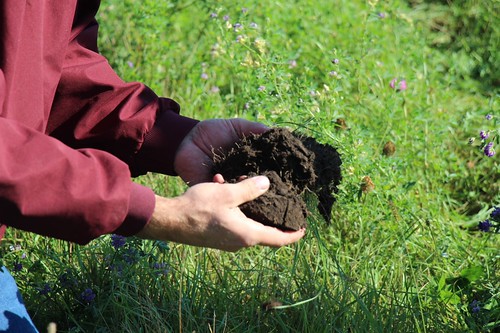
Posted by Dan Zinkand, NRCS South Dakota, on August 24, 2015 at 11:00 AM

The Littles have a diversified farming and ranching operation. Photo: Dan Zinkand for NRCS.
When you stop on a bridge that crosses the Big Sioux River in Hamlin County, South Dakota, and look south you can see how well Donnie, Barry and Eli Little manage their cows and crops to improve soil and water quality and increase productivity.
Cows graze in one of 24 paddocks that the family manages with a computer program Eli made after graduating from South Dakota State University in 2013. An electric fence along a buffer strip following the river keeps cows out, protecting the source of drinking water for the city of Sioux Falls.
“In 2014, there were ears on every stalk on that field for the first time in years,” says Barry, which he attributes to improved soil and variable rate seed and fertilizer.
The Littles’ farming operation combines brothers Donnie and Barry’s decades of experience with crops and cattle with the talent of Barry’s son Eli’s precision agricultural expertise.
In the early 1990s, the brothers began no-tilling their corn, soybeans and hard red spring wheat. Recently, the Littles have done some strip-tilling of corn.
“With no-till, our soils are like a sponge. There used to be some gullies, but not anymore. A three-inch rain will soak into our no-tilled fields,” said Donnie. “Our fuel and machinery costs are less with no-till. We don’t need a digger or a disk. No-till saves a lot of time.”
“I believe my yields are better with no-till than with tillage,” Donnie said. “We have a moisture deficit, and one to two inches of moisture gained with no-till makes a heck of a difference.
“The Littles are doing a lot of things to make their farm and ranch more productive,” says Jim Dylla, District Conservationist with the USDA’s Natural Resources Conservation Service (NRCS).
For the Littles, multi-species long-season cover crops provide forage for their cow-calf pairs. “We’ve turned most of our hay ground into pasture,” Barry said. “We are working on extending the grazing season as long as we can.”
“Seeding the full-season cover crops is part of our decision to provide more feed for our increased number of cows,” Barry Little says.
“The cows and calves did well on the full-season cover crops in October,” Barry said. “After the calves were weaned in October, they adjusted well in the feedlot.”
In early September, cows had grazed and been moved to another paddock, but some sunflowers, big purple top turnips and radishes still stood as the Littles and Dylla evaluated the post-grazing condition of the soil.
“Getting cover crops planted will do wonders for soil health and soil biology,” Dylla says.
Cover crops do more than provide forage for cows. They also help farmers manage excessive moisture. “We had a lot of rain last fall,” Dylla says. “Any fall moisture is really going to be excessive, so you have to make use of it with cover crops. Instead of the nutrients leaching out of crop ground, the cover crops bring them back up to the surface where they are available for next year’s crop.”
To learn more about NRCS conservation programs and soil health, visit your local USDA Service Center or http://www.nrcs.usda.gov/GetStarted.

The use of cover crops has become a key element in the Littles' farming and ranching management plan. Photo: Dan Zinkand for NRCS.
Related Posts
Tags: cattle, Conservation, cover crops, Farmers, Livestock, NRCS, soil health, South Dakota, water quality
Subscribe to:
Comments (Atom)





